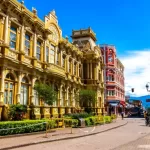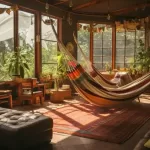Costa Rica’s First Water Park
I just came across a story on line that inspired me to write this article about Costa Rica’s original water park, Ojo de Agua.
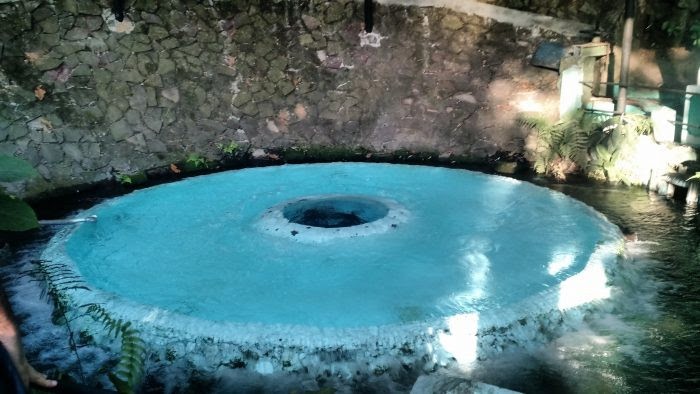
When I moved to Costa Rica in 1980 things were really different than they are now: there were less people, automobiles and development. Expats who live here now would never recognize the Costa Rica of yesteryear.
I remember on Sundays a group of my friends and I would catch a bus in downtown San José and make the hour-hour journey to Ojo de Agua in San Antonio de Belén. On a typical day we would swim, play volleyball or soccer, watch all of the beautiful women and have lunch there. After spending about three or four hours engaged in said activities we would then go across the street to “El Palenque.” The latter was a bar, restaurant and dancehall on Sundays with live Latin music. The festive atmosphere was unique and could not be beat for having fun.
One of the most memorable experiences I had at the water park was a free concert September 15, 1985 by the previously unknown, Miami Sound Machine. The performance was one of their first and marked the beginning of a long and illustrious international career under the leadership of Emilio and Gloria Estefan.
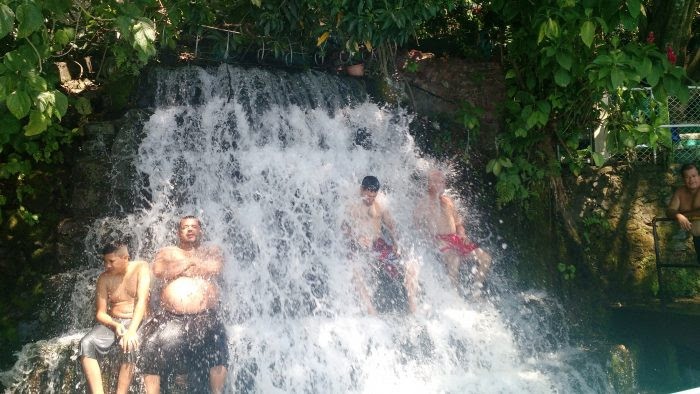
Ojo de Agua still exists but it is not as popular as before because more Costa Ricans have automobiles and can venture out of the Central Valley on weekends. Nevertheless, I recommend expats visit one of the country’s best-kept secrets if they have never been there before. In fact, most resident expats and tourists I talk to do not even know that this hidden gem exists. It is quite a unique experience and one of the few vestiges of the old Costa Rica still found in a rapidly changing world.
Ojo de Agua is just one of the hundreds of places that expats can visit to stay busy and happy while living in Costa Rica.
Now let’s look at the history of Ojo de Agua. Ojo de Agua means “eye of water” but also refers to a spring. In fact, the spot where the water rushes out of the ground is designed to resemble an eye. The water surges out at an amazing 5,000 gallons a minute or 359 liters of water a second. The gushing water feeds a large Olympic-size pool on the lower level has a waterfall at one end. Because of the huge volume of water that flows continuously, a complete change of water happens every 12 minutes so no chemicals need to be added.The water park also boasts a lake, basketball courts, hiking trails, soccer fields, and a restaurant.
Ticos began visiting to the spring and river to bathe and enjoy the countryside long before it became a park. In 1934 the first pools on the upper level were constructed, and in 1937 the area became a national recreational park that drew people from all over the metropolitan area.
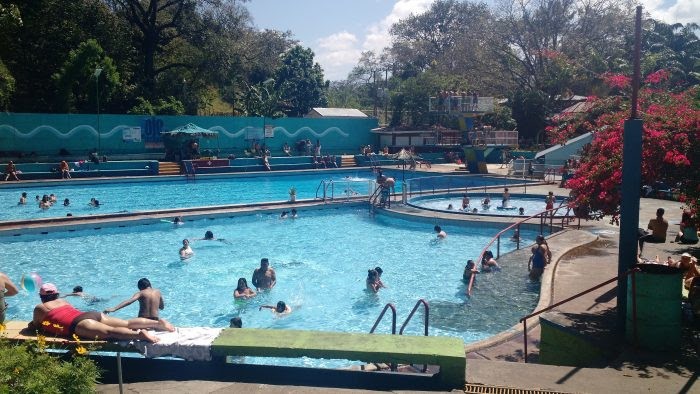
The large pool at Ojo de Agua, the long-running water park popular with Ticos.
The park opens daily at 6 a.m. and closes at 4 p.m. Admission is ¢600 colones ($1.20) or ¢300 colones ($0.60) for older adults with identification or a gold card, and free for children under 6. Parking costs ¢500 colones ($1). Storage lockers are available for ¢1,000 colones ($2) plus a ¢1,000 colones deposit. The park’s phone number is 2441-0655.
Buses depart every half hour from San José behind the Merced Church, in Heredia from Los Angeles Park and in Alajuela from the bus station. By car, it’s a short drive along the General Cañas Highway to the Firestone turnoff, then following the road south to the park.
Here is quick glimpse of the water park:


